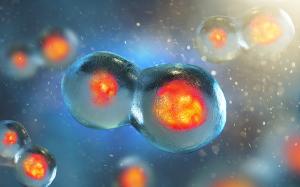In the same section
-
Share this page
ARC: research project "noise sensitivity"
Noise sensitivity of gene regulatory networks underlying cell fate specification

During the embryo’s development, cells divide and specify into different cell types that will form, starting from a single cell, all the tissue and organs of the adult individual. This specification is governed by gene regulatory networks, which control the expression of key proteins that characterize a given cell type.
Molecular fluctuations, also known as ‘noise’, play a fundamental role in this process, as they promote the emergence of different cell states out a single initial situation. However, cell decision-making processes necessarily produce in well-defined populations, which suggests that gene regulatory networks are also resilient to noise.
This project will combine cell specification models with the theory of stochastic processes, in order to study how the structure of gene regulatory networks influences their sensitivity and resilience to noise.
In collaboration with a team led by Dr Claire Chazaud (GReD, Clermont-Ferrand, France), researchers at ULB will seek to identify the mechanism responsible for the first cell specification that occurs during the development of a mouse embryo.
Coordination : Geneviève Dupont,Unit of Theoretical Chronobiology, Faculté des Sciences
Partner : Yannick De Decker, Nonlinear Physical Chemistry Unit, Faculté des Sciences
Dates
Created on September 3, 2020
